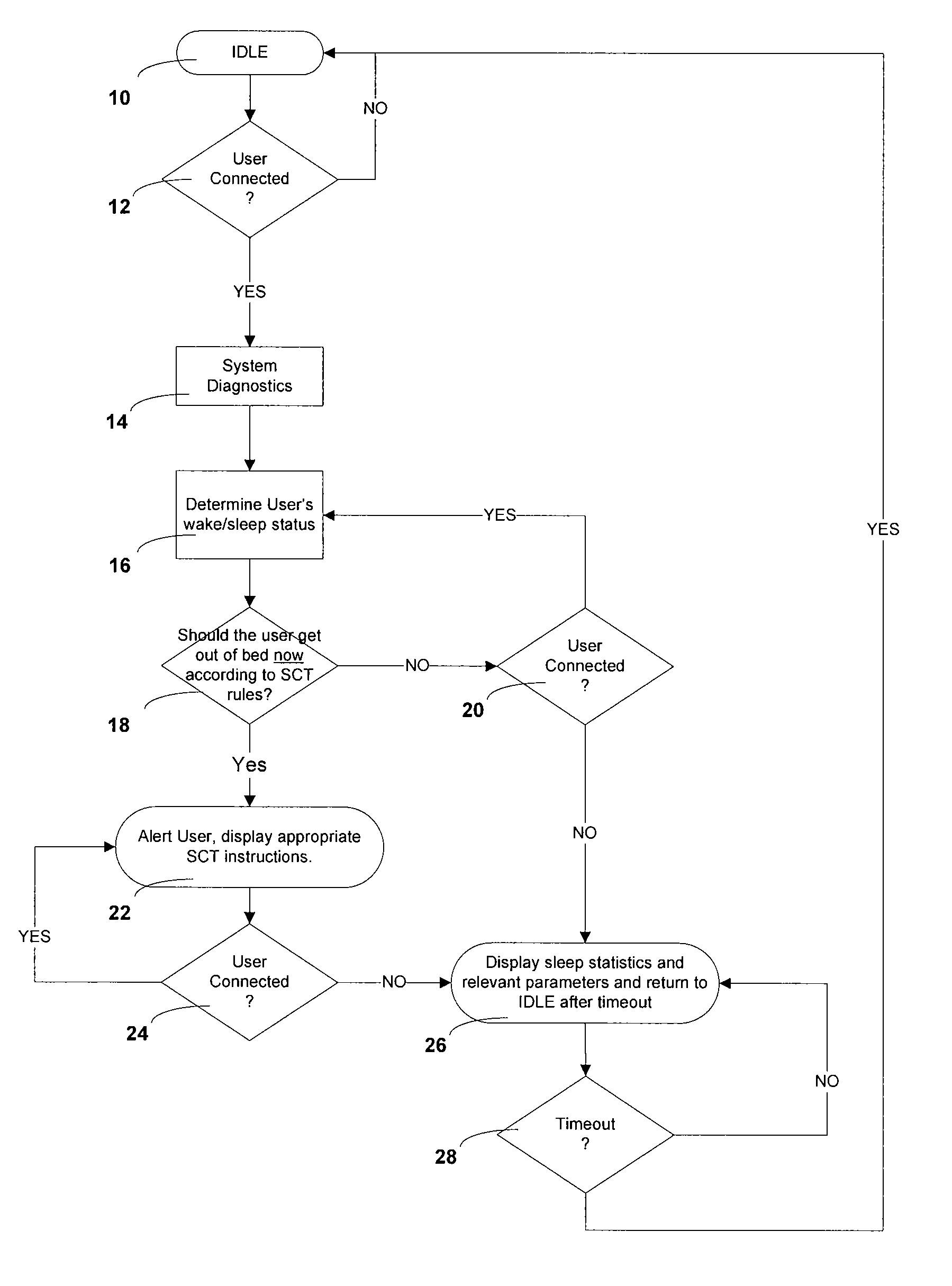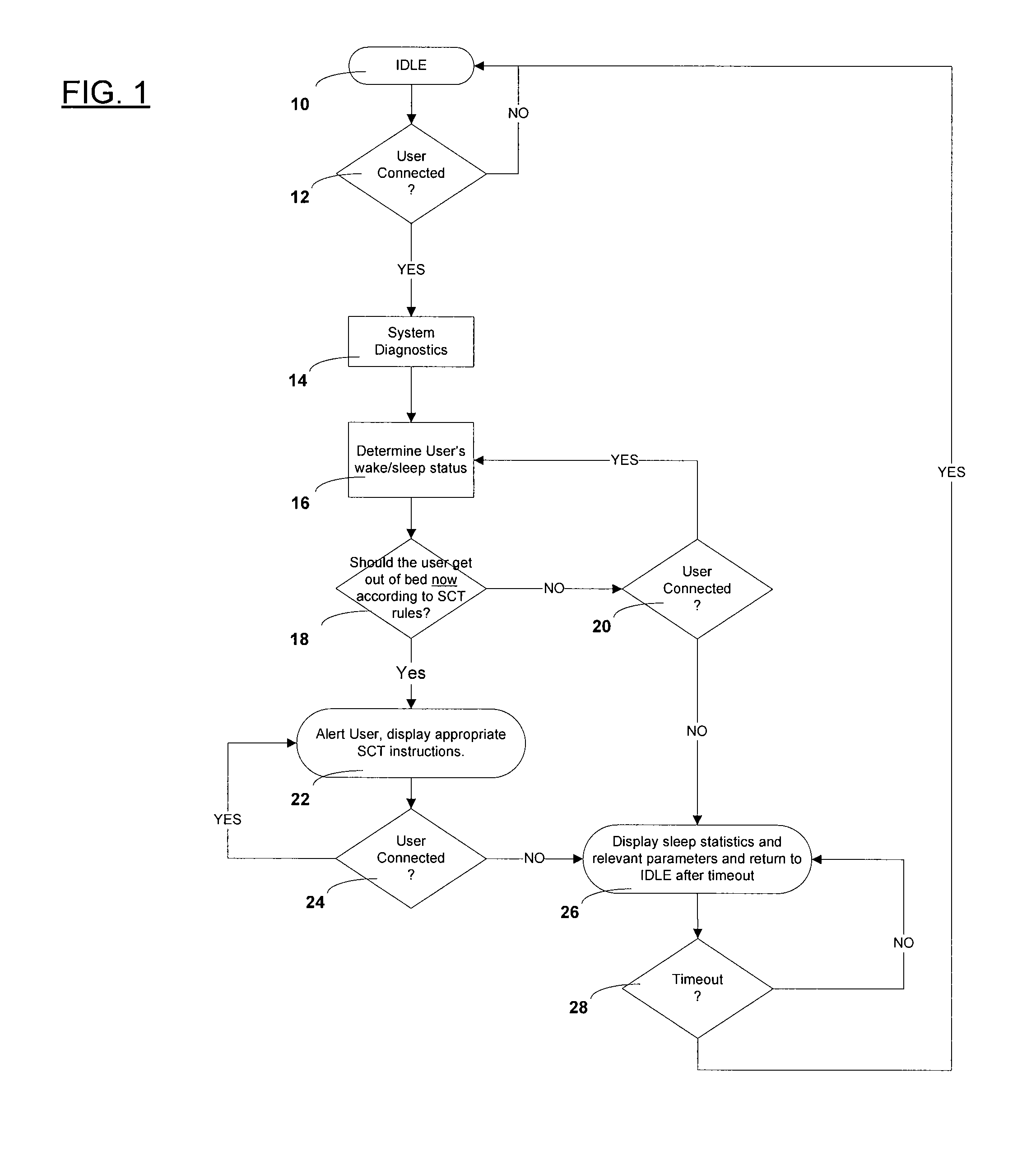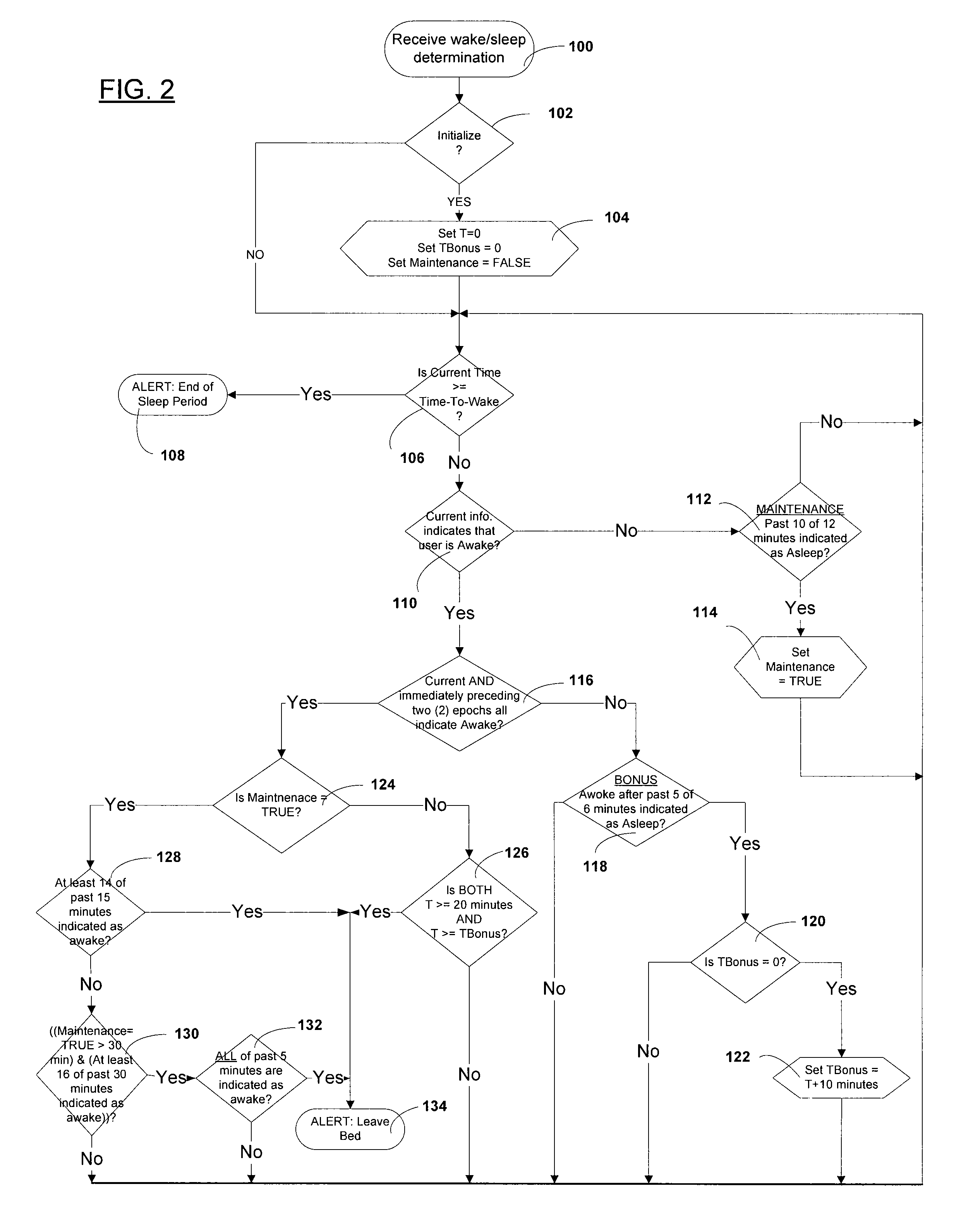Automated treatment system for sleep
a technology of automatic treatment and insomnia, applied in the field of helping people suffering from insomnia, can solve the problems of insomnia sufferers having difficulty insomnia is difficult to initiate or maintain, and insomnia sufferers have difficulty in falling asleep or staying asleep
- Summary
- Abstract
- Description
- Claims
- Application Information
AI Technical Summary
Benefits of technology
Problems solved by technology
Method used
Image
Examples
Embodiment Construction
[0061]In the description of the invention above, and in the detailed description of the invention, and the claims below, and in the accompanying drawings, reference is made to particular features (including method steps) of the invention. It is to be understood that the disclosure of the invention in this specification includes all possible combination of such particular features. For example, where a particular feature is disclosed in the context of a particular aspect or embodiment of the invention, or a particular claim, that feature can also be used, to the extent possible , in combination with and / or in the context of other particular aspects and embodiments of the invention, and in the invention generally.
[0062]The invention described herein employs passive wake / sleep determination means as part of an automated system for those implementing Behavioral Therapies for treating Insomnia that require knowledge of sleep parameters in their implementation. Such Behavioral Therapies i...
PUM
 Login to View More
Login to View More Abstract
Description
Claims
Application Information
 Login to View More
Login to View More - R&D
- Intellectual Property
- Life Sciences
- Materials
- Tech Scout
- Unparalleled Data Quality
- Higher Quality Content
- 60% Fewer Hallucinations
Browse by: Latest US Patents, China's latest patents, Technical Efficacy Thesaurus, Application Domain, Technology Topic, Popular Technical Reports.
© 2025 PatSnap. All rights reserved.Legal|Privacy policy|Modern Slavery Act Transparency Statement|Sitemap|About US| Contact US: help@patsnap.com



